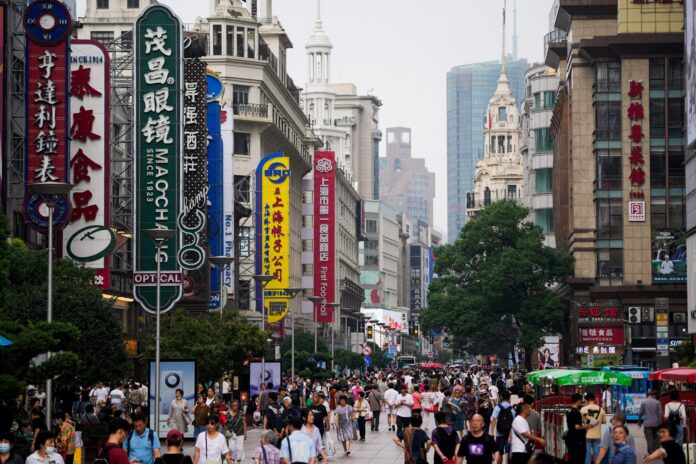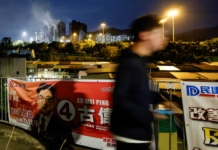The CCP’s much-hyped stimulus policies of late 2024 are a mere shadow of the mega-package launched in 2008
Dikang, chinaworker.info
In late September, China’s central bank cut benchmark interest rates and signalled a major new series of economic stimulus polices. The initial stimulus frenzy gave way to deep disappointment as few solid details of new fiscal spending emerged. Some theories say the CCP is saving its stimulus ammunition for the new trade war with Donald Trump that is likely to break out in 2025. But while more stimulus measures are possible, even likely, Beijing’s financial firepower has been shown to be more limited than many observers realise…
BEIJING BAZOOKA?
In September, Chinese government agencies announced major economic stimulus measures. But this was a far cry from the mega stimulus package launched in 2008, and more a case of “loud thunder, but only tiny drops of rain”. Initially, China’s stock markets surged on the expectation that Xi Jinping was reaching for his “bazooka” to boost the economy with new funds. With the economy mired in an unprecedented slump, including the biggest property sector collapse in history, the capitalists are desperate for a financial package of similar proportions to 16 years ago. But behind the eye-catching headlines, the scale of the new measures is modest, and most is directed into bailing out debt-stricken local governments. As reality sunk in, the euphoric mood of Chinese and global capitalists has given way to renewed pessimism.
What does this tell us? Marxists have explained that the CCP dictatorship’s scope for major economic stimulus is much more constrained today than in 2008. China’s debt-to-GDP ratio rose to 307.7% in June 2024 from 299% at the end of 2023 (it was 139% in 2008, less than half today’s level). The debt grows remorselessly even as the economy has stopped growing. Economist Gao Shanwen says that China’s GDP growth over the past three years is 10% lower than reported. This is an expression of a new reality: China’s debt-driven state capitalist economic model has reached its limits.
STIMULUS OR BAILOUT?
In November, the NPC Standing Committee finally provided hard numbers about how much the CCP plans to inject into the economy. But its long-awaited announcement was an anti-climax. In total, 10 trillion yuan (US$1.4 trillion) will be available to heavily-indebted local governments in the form of special bonds and debt swaps over the next five years. Rather than stimulus to spur economic growth, this is a debt bailout. The thinking is that local governments, many on the verge of insolvency, will roll over existing debt with new debt at more favourable interest rates.
Economist Victor Shih described this as “a ten trillion yuan accounting exercise”. The amount might look impressive at first sight, but does not contain any new money – the 10 trillion yuan was already planned and is just “repackaged” to support Beijing’s new stimulus narrative. It also falls far short of what most economists believe is needed. Spread over five years (until 2028), the 10 trillion yuan plan will save local governments 600bn yuan in interest payments – 120bn yuan per year. That amounts to less than 0.1% of China’s expected GDP over the same period. Such a small amount will not halt the wave of wage cuts, service suspensions and privatizations – “smashing iron pots to sell the steel” – that local governments across the country are carrying out. Xi’s regime believes the economy is only being held back by a lack of “confidence” and that the answer is more optimistic official rhetoric. An idealist, rather than a materialist analysis, in other words.
WHAT ABOUT THE STATE-OWNED BANKING SYSTEM?
A report from Rhodium Group (1 September 2024) argues that the deep problems in China’s banking system are now constraining economic growth. This is a consequence of the huge build-up of debt within the economy, in large part due to previous bouts of financial stimulus. “China saw the largest single-country credit expansion in over a century, adding US$24 trillion in new assets over the eight years from 2008 to 2016, around one-third of global GDP”, the report states.
Much of this debt has soured, and needs to be rolled over (replacing old debt with new debt). “A financial system this large and impaired can no longer generate the same pace of credit and investment growth as it did in the past”, says the report. As the economy sinks into Japanese-style stagnation, the CCP wants the banks to speed up lending to spur growth. But the need to inject vast sums to rollover the existing debts of state-owned enterprises and local governments has gummed up the system.
STOCK MARKET “WELFARISM”
As part of Beijing’s stimulus plan, the People’s Bank of China unveiled new and “unconventional” policy tools worth 800bn yuan to boost the stock market. This policy is “welfare for the stock market”, from a regime that opposes calls for a stronger social safety net for working class people because this would “encourage laziness”. Financial institutions such as brokerages can now access 500bn yuan worth of “debt swaps” to play the stock market. Another 300bn yuan will subsidize stock buy-backs, a trick companies use to inflate their own share values.
The PBoC announcement triggered a manic stock market rally supported by an intensive media campaign. In five days of trading the CSI300 index was up 25%, a record. Huge numbers of under 30-year-olds were drawn into the stock market, some gambling scholarship funds and savings. Disconnected from the real economy, which is in deep crisis, the stock market bubble cannot be sustained. The CSI300 has sunk again, by 12% since 8 October. China’s stock market is still down 20% from its level in 2021 despite Beijing’s “steroids”.
PROPERTY CRASH
The real estate crisis enters its fourth year with no sign of improving. House prices have fallen by 30% since 2021. Total housing sales are half that year’s level (9.5 trillion vs. 18 trillion yuan). The gigantic crash, caused by capitalism’s in-built speculation tendencies, plunged the whole economy into a long-term slump. To counter this, the CCP’s stimulus measures have been completely ineffective. The housing crisis has so far wiped out an estimated 131 trillion yuan in wealth from households – more than China’s GDP. It is this drastic fall in wealth and income – not some vague “confidence” problem – that hobbles consumption.
REMEMBER 2008?
To stave off the impact of the global financial crisis, the CCP launched a gigantic stimulus package in November 2008, worth 4 trillion yuan (US$596 billion). This was 13% of China’s GDP at the time. By comparison, today’s 10 trillion yuan package is worth about 2.5% of GDP. In fact, the 2008 package was much bigger, because the CCP lost control over the situation. Local governments set up thousands of so-called LGFVs – off balance sheet entities – and trillions of yuan in additional loans were pumped into property and infrastructure projects.
Oxford Economics estimates the real total was as much as 20 trillion yuan, five times the official sum. China overtook Japan as the world’s 2nd economy in 2010 and achieved 10.6% GDP growth that year. However, this led to an uncontrollable debt explosion, from around 51 trillion yuan in 2007 to 387 trillion today. The lack of a similar huge stimulus package today underlines how far Beijing’s financial wiggle room has narrowed, for fear of triggering a financial crisis.
CAPITALISM = JAPANIFICATION
Marxists predicted that the internal contradictions of China’s state capitalist model, lurking beneath its growth “miracle”, would lead to Japanification of the economy i.e. a prolonged phase of stagnation caused by huge debt levels. Some economists still debate if this has happened, or is about to happen, or can be avoided if Beijing adopts the “right” policies. The same economists have consistently underestimated the depth of China’s crisis. They falsely believed the pandemic was the primary cause of China’s economic slowdown and expected the economy to bounce back strongly in 2023. As we said at the time, that was a fantasy.
Important differences between China’s state-dominated capitalism and capitalism in the older capitalist states mean that China is less likely to experience a 2008 US-style banking crash (although this can’t be ruled out). A “slow motion crisis” is a more likely perspective. The CCP-controlled banks are ordered to indefinitely “extend and pretend”, keeping zombie companies and local government entities from going under by extending new loans, despite their inability to pay off the debt. This is somewhat similar to what happened in Japan after its property bubble burst in the early 1990s. Japan also avoided a financial crash like Wall Street’s 16 years ago. By the mid-1990s, however, zombie companies (kept alive by bailouts) accounted for 25% of Japan’s stock market. In China this year, 30% of companies are zombies. Capitalism, both “Western” and “Asian” models, cannot avoid deep crises and turmoil.




